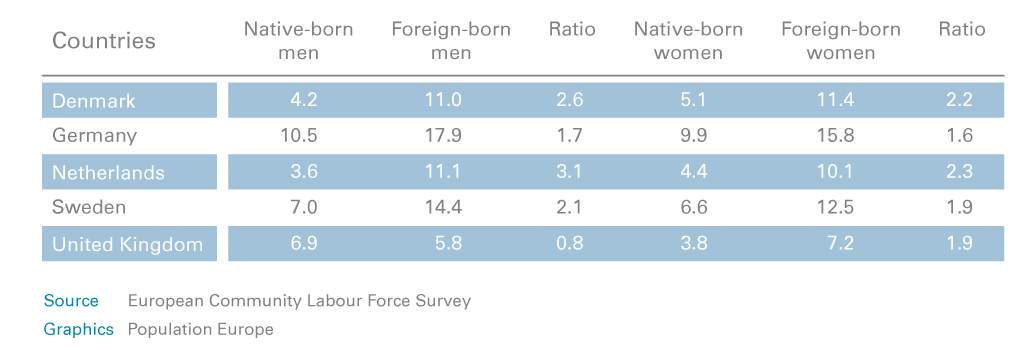When it comes to family policy, childcare or gender equality, Sweden always ranks at the top and is viewed as a role model. The same is true for the countryˆs policies towards immigrants. Anja Wiesbrock from University of Oslo wanted to find out how successful those policies really are, especially when it comes to the integration of migrants into the labour market.
Swedish policies are based on the principles of multiculturalism and diversity, and the Scandinavian country was one of the first to recognise the importance of immigrant integration. Language classes and other measures were introduced as early as the 60s. Since the 1980s, the number of immigrants in Sweden has risen steadily; the percentage of the population born abroad is even larger than in the UK.
The main characteristics of the Swedish integration programme
First of all, participation in integration programmes in Sweden is generally voluntary. Neither language classes nor activities to facilitate entry in labour market are mandatory. Even failure to participate or pass a class does not have any financial or residential consequences.
The programmes are employment-oriented. In addition to certain projects that work at including immigrants in the labour market, there are further measures to guarantee that migrants do not have to be employed in jobs for which they are overqualified. The overall goal is to make them as prepared for the job market as Swedes. Another important point is that obtaining citizenship in Sweden can be achieved much more easily than in most other western countries. In addition, the Swedish government embraces dual nationality.
Evaluation with an emphasis on labour market integration
It is difficult to evaluate integration processes, but one can measure labour market integration. Even though Swedish integration policies have an exemplary reputation, the gap in unemployment between the native and foreign-born population in Sweden is still huge. To be precise, in 2004 / 2005 the difference in unemployment rates between foreign-born and natives stood at a ratio of two to one. Thus, foreigners were at least twice as likely to be unemployed as native workers. With this result, Sweden is rated average compared with other EU countries. In the UK foreign-born men have an unemployment rate that is just 0.8 times higher than that of native-born men. This difference is only slightly smaller in Germany than in Sweden, whilst in Denmark and the Netherlands there is a greater discrepancy in unemployment rates between native and foreign-born (Table 1).

Table 1: Unemployment rates of the native- and foreign-born populations, 15-64 years old, 2005/2004 Average
Possible reasons for the result
In the case of Sweden there are a number of factors that might have had an impact on the unfavourable labour market performance of non-natives. Among these is Sweden’s very high unemployment rate during the 1990s, which led immigrants to be faced with highly unfavourable employment conditions.
Another issue is that Sweden is a relatively small country and the Swedish language is not widely spoken outside the country, which means that immigrants must undergo a long training period before they can attempt to enter the job market. Of course, factors such as direct or indirect discrimination can also be relevant, and in Sweden social networking, often built up over generations, plays quite a crucial role in the recruitment process.
Lastly, even the comprehensive Swedish welfare system could have a negative impact on migrants in the labour market. Regulations can affect migrants’ self-reliance and initiative. Relying on the state too much for support can lead to a situation of “learned helplessness”, which then reduces one’s chance to be integrated in the labour market.
Beyond the labour market
It is possible to say that integration policies in Sweden are ambiguous and that they have done little to improve the unemployment rates of non-natives. But apart from labour market outcomes, the policy framework in Sweden is welcoming towards foreigners with its liberal family reunification regulations, lack of mandatory tests, and relatively easy access to residency and citizenship.
This volume has been published with financial support of the European Union in the framework of Population Europe.